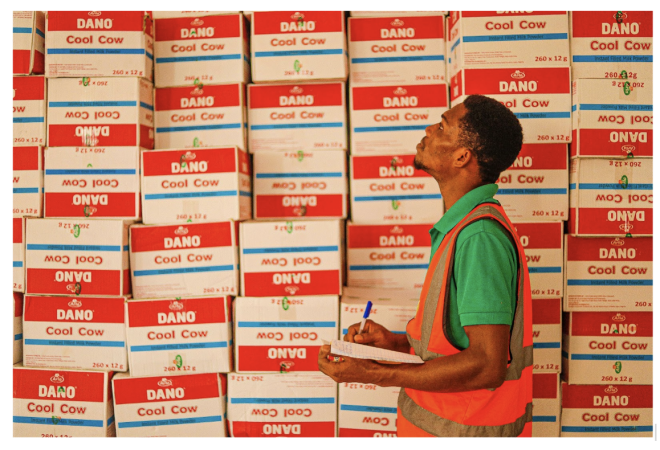- Change theme
Maximizing Workflow Efficiency with Solvent and Chemical Resistant Labels

In industries where chemicals and solvents are part of the daily grind, staying efficient and safe is non-negotiable.
03:00 15 March 2025
In industries where chemicals and solvents are part of the daily grind, staying efficient and safe is non-negotiable. If you've ever worked in a lab, manufacturing plant, or industrial environment, you know that keeping things organized and compliant can be a challenge. That's where solvent and chemical resistant labels come in. They aren't just stickers—they’re an essential part of maintaining a smooth, safe operation. But what makes them so critical?
The Power of Durability: How Chemical Resistant Labels Stand Up to the Test
Anyone who’s ever had to deal with harsh chemicals can tell you that not all labels are created equal. A simple paper label might look good at first, but once it’s exposed to solvents like acetone, xylene, or toluene, it’s bound to lose its integrity. Here’s where solvent and chemical-resistant labels shine. They're designed to endure the toughest conditions, making sure the information on them stays legible and intact even when things get rough.
By holding up to aggressive solvents and chemicals, these labels ensure that operations run smoothly without constant replacements. You know how much time and effort it takes to redo tasks due to equipment failure or label damage, right? These labels help eliminate those headaches, ultimately boosting workflow efficiency. Imagine not having to worry about constantly replacing labels because they’ve smudged or peeled off—what a relief!
Safety and Compliance: Keeping Everyone on the Same Page
In environments where safety and compliance are everything, labels are more than just a necessity—they’re a lifeline. Solvent and chemical-resistant labels make sure hazardous materials are clearly identified, which is crucial for both safety and regulatory compliance. In labs and industrial settings, clear identification reduces the risk of mishandling or improper use of chemicals.
When the pressure’s on and time is of the essence—say, during an emergency or a quick clean-up—having a label that won’t fade or disintegrate can be the difference between a safe, swift response and a dangerous situation. These labels are specifically engineered to withstand exposure to harsh substances, ensuring critical information is always visible when you need it most. Safety isn’t just about wearing gloves or using the right equipment—sometimes it’s about knowing exactly what you’re working with, and a solvent-resistant label plays a huge role in that.
Customization and Versatility: Tailoring Labels to Fit Your Needs
Here’s where things get really interesting. Solvent and chemical-resistant labels don’t just have to be functional—they can also be customized to suit your specific needs. Imagine having a label that not only survives the toughest chemicals but is also tailored to your exact specifications, including barcodes, graphics, or unique text. It’s like having a label that’s made just for your operations, enhancing efficiency and saving time in the long run.
Customization doesn’t stop at just adding logos or text. These labels allow organizations to streamline their processes, improving inventory management and tracking systems. You can print these labels in-house, which cuts down on the need to outsource, saving both time and money. When every second counts, the ability to design and print your own labels means you’re always ready to keep things moving without unnecessary delays.
Durability That Withstands It All
Let’s talk about resilience. These labels are engineered with extreme durability in mind. Whether you’re dealing with intense heat, freezing temperatures, or a cocktail of harsh chemicals, solvent and chemical-resistant labels stand tall. Their ability to survive extreme conditions—like exposure to acetone or high temperatures—means they won’t crack, peel, or lose their readability. This level of durability is vital for keeping your operations running smoothly, especially in industries that require constant vigilance.
Whether you’re working in a lab, warehouse, or any other environment that involves chemicals, maintaining operational integrity is paramount. Solvent-resistant labels ensure that everything stays in place, both physically and logistically. They help prevent costly mistakes, delays, or safety violations by ensuring that essential information is always accessible and intact.
Why Solvent and Chemical Resistant Labels Matter
At the end of the day, solvent and chemical-resistant labels are more than just labels. They’re about efficiency, safety, and peace of mind. They help keep things organized, safe, and compliant, all while standing up to the toughest environments.
With their customization options and resilience, they offer businesses the chance to streamline their workflow, reduce costs, and prevent downtime. From clearly marking hazardous materials to improving inventory management, these labels are a simple yet effective solution to many of the challenges faced in chemical-heavy industries.
So, if you’ve ever wondered how to improve workflow efficiency and ensure that your operations run like clockwork, consider making solvent and chemical-resistant labels a key part of your strategy. They're not just a small detail—they’re a game-changer in the world of industrial and laboratory settings.
Wrapping Up
In industries where chemicals are ever-present, ensuring that labels stay intact and readable through it all isn't just a nice-to-have—it's a must. Solvent and chemical-resistant labels are designed with durability, safety, compliance, and customization in mind. They help keep operations running smoothly, improve safety, and minimize the risk of costly mistakes. Whether you’re labeling chemicals in a lab or organizing inventory in a warehouse, these labels provide the reliability you need to keep things moving.
By investing in these labels, you’re not just investing in a product; you’re investing in a more efficient, organized, and safe work environment. After all, who doesn’t want to make their operations smoother, safer, and more efficient?
